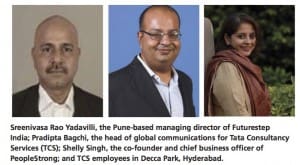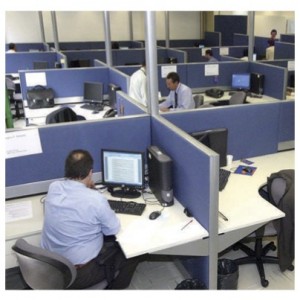Not yet, but it wants to be -and here’s why they might get there
By Michael Switow
Standing at podiums in front of business audiences throughout the late ‘90s and early 2000s, then CEO and Chairwoman of Ogilvy & Mather Shelly Lazarus used to tell executives about the clearest brief she had ever received from a client, Indian Finance Minister P. Chidambaram. “When people think of India, I want them to think software, not elephants,” Chidambaram told her.
Since then, India’s information technology industry -which includes business process outsourcing (BPO) and I.T. Services – has skyrocketed, accounting for more than seven percent of GDP, generating revenue of nearly US$150 billion annually and employing nearly 3 million software developers. Some analysts believe India will overtake the US as the largest employer of developers in the world within three years.
Now, Indian Prime Minister Narendra Modi is upping the ante.
“If China has emerged as the manufacturing capital of the world,” Modi recently said, “India can become the human resources capital of the world.”
While Modi didn’t set a timeline to accomplish this feat, he’s banking on what’s commonly referred to as India’s “Demographic Dividend”. Industrialised nations are getting older. As Baby Boomers and the PRC’s one-child parents retire, the size of the working age population is dropping in China, Japan, Europe and the United States. But nearly one- third of India’s 1.2 billion population is currently between the ages of 10 -24, according to a United Nations report. India is also on track to surpass China as the world’s most populous country by 2022.
“If we look at the huge human potential that India has, the Prime Minister’s goal is definitely achievable,” says
Shelly Singh, the co-founder and chief business officer of PeopleStrong.
“I think it’s very realistic,” agrees Sreenivasa Rao Yadavilli, the Pune-based managing director of Futurestep India. “As most of the world grows older and India stays younger – given mobile devices and the ‘cloud’, a lot of services can be delivered from anywhere in the world.”
“As sectors like health care and financial services continue to grow, India is best poised to be able to supply the human capital for the work,” he adds.
It will take more than a youthful population, though, for India to be able to provide the world’s human resources. First, it will need to overcome a huge Skills Gap. Nearly thirteen million Indian youth join the workforce every year, but only about 1 in 3 are considered ‘employable’, according to research conducted by the Confederation of Indian Industry, LinkedIn, PeopleStrong and Wheebox. The figures are even worse for engineering and MBA graduates, with only 17% and 10% deemed employable in 2014.
“This is a very wide gap,” says Yadavilli. “Almost every firm, including ours, trains graduates and post-grads after we employ them.”
“Most of the corporates who hire have some sort of bridging programme,” agrees Pradipta Bagchi, the head of global communications for Tata Consultancy Services (TCS), which hires about 55,000 professionals every year and has a global staff count of nearly 325,000. Most of TCS’s recruits are in India, but they create programmes and software architecture for brands across the globe, including Chrysler, Sony and Singapore Airlines.
In addition to a 90-day training programme for new hires, TCS spends time and resources in universities across the country. It’s created a LinkedIn-like social platform for engineering and computer science students to interact and access white papers and articles about TCS’s technologies and areas of work. Students can study the materials at their own pace and test their comprehension with online quizzes. TCS also trains professors to ensure they’re fluent with the latest concepts in software engineering.
“We have invested quite significantly to set up strong linkages with universities and engage with students on multiple fronts,” says Bagchi. “This helps us pick students who are motivated, passionate and hungry to learn.”
In some ways, India already is a human resources capital. “In the ‘80s and ‘90s, companies like TCS showed that we can leverage Indian engineering talent and do the same kind of work in a more efficient fashion. So now that’s become the mainstay of the entire global industry. Name any big tech firm, the talent is here,” says Bagchi.
India’s media is filled with headlines of companies making new investments in the sub-continent -and not just from the tech world. The world’s largest cereal maker, Kellogg Company, is opening its first Indian R & D facility to create foods that cater better to Indian taste buds. Taiwanese electronics manufacturer Foxconn is investing US$5 billion to build factories and fund research. Twitter is opening an R & D centre in Bangalore, its first outside the US.
“Twenty years ago, you would have hardly seen Research & Development. Look at it today – Mercedes-Benz, Intel, Cisco, Google, Facebook – they all have set up R & D centres in India, which require jobs with high-end capabilities and skills,” remarks Yadavilli.
India’s Prime Minister is no longer content to leave skills training to the corporate sector, though. His government’s plan is to create skilled professionals across the workforce. New initiatives aim to provide vocational training to 400 million youth over the next seven years.
If the plan is successful, the impact on India’s human resources industry could be huge: legions of job-ready professionals, trained to global standards, ready to work in both local and multinational enterprises, rather than in the Mom & Pop shops that currently account for a large portion of India’s economic output.
Over 90% of India’s workers are now part of the informal economy, lacking job security and benefits.
“The agenda is to convert this ‘unorganised workforce’,” explains Singh. “Only a 10% change would mean a huge push for human resources frameworks – introducing technology, universal social security, new retirement benefits and schemes – they are all going to impact the HR world positively.”
(Michael Switow, a veteran B2B journalist who has worked on several continents, is HRO Today Global’s Asia Pacific correspondent.)
















